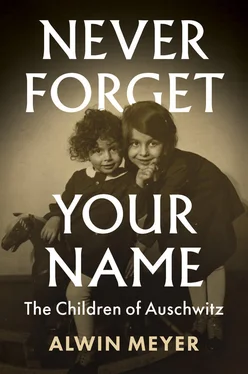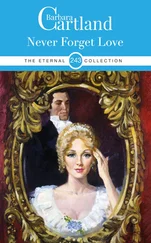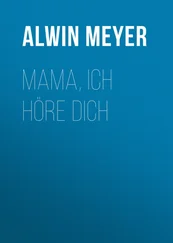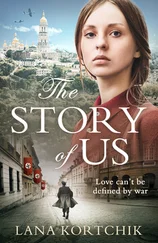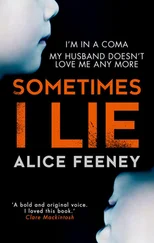71 71 Alicke, Jüdische Gemeinden, vol. II, pp. 576–8.
72 72 Alfred Etzold, Ein Berliner Kulturdenkmal von Weltgeltung – Der Jüdische Friedhof Berlin-Weißensee, mit einem Beitrag von Jürgen Rennert (Berlin 2006), pp. 13–45.
73 73 Alicke, Jüdische Gemeinden, vol. I, pp. 73–6; Spector, ed., Jewish Life, vol. I, p. 33.
74 74 Spector, ed., Jewish Life, vol. I, p. 127.
75 75 Claudia-Ann Flumenbaum, ‘Von den Anfängen bis 1789’, in Andreas Nachama, Julius Schoeps and Hermann Simon, eds., Juden in Berlin, 2nd revised edition (Berlin 2002), p. 9.
76 76 Michael Brenner, ‘Die Weimarer Jahre’, in Nachama et al., eds., Juden in Berlin, pp. 137–80; Elke-Vera Kotowski, ed., Juden in Berlin – Biographien (Berlin 2005), pp. 65, 68–9, 173, 227, 243, 285–6.
77 77 Avraham Barkai, Paul Mendes Flohr and Steven M. Lowenstein, German-Jewish History in Modern Times, vol. IV, Renewal and Destruction 1918–1945 (New York 1998), pp. 37–40.
78 78 Ibid., pp. 40−3.
79 79 Jarosław Drozd, Lost in the Whirlwind of War – The Jewish Community in Gdynia/Poland (Gdynia 2008), pp. 145–9.
80 80 Ibid., pp. 56–65; Museum of the History of Polish Jews, ‘History of the Jewish Community in Gdynia’, https://sztetl.org.pl/en/towns/g/35-gdynia/99-history/137291-history-of-community, and ‘Demography’, https://sztetl.org.pl/en/towns/g/35-gdynia/100-demography/20726-demography.
81 81 Hille J. Kieval, ‘Die Juden in Böhmen, Mähren und der Slowakei’, in Natalia Berger, ed., Wo sich Kulturen begegnen – Die Geschichte der tschechoslowakischen Juden (Prague 1992), pp. 23–8.
82 82 Milada Vilímková, Prager Judenstadt (Prague 1990), pp. 85–7.
83 83 Ibid., pp. 143–83; Jindřich Lion, Jüdisches Prag /Jewish Prague, trans. Nick Somers (Vienna 2005), pp. 77–81.
84 84 Stein, Die Geschichte der Juden in Böhmen, pp. 157–8.
85 85 Vilímková, Prager Judenstadt, pp. 9–79.
86 86 Jindřich Lion and Jan Lukas, Das Prager Ghetto (Prague 1959), pp. 54–60; Lion, Jewish Prague, pp. 128–33.
87 87 Spector, ed., Jewish Life, vol. II, pp. 1020–1.
88 88 Israel Gutman, ed., Encyclopaedia of the Holocaust, 4 vols. (New York 1995), vol. III, p. 1185.
89 89 Yeshayahu A. Jelinek, The Carpathian Diaspora – The Jews of Subcarpathian Rus’ and Mukachevo (New York 2007), pp. 31–341.
90 90 Ibid., p. 14.
91 91 Livia Rothkirchen, ‘Das tschechoslowakische Judentum: Entwicklung und Niedergang (1918–1939)’, in Berger, ed., Wo sich Kulturen, p. 108.
92 92 Jelinek, The Carpathian Diaspora, Map 3, p. xx.
93 93 Interview with Adolf Smajovich-Goldenberg, Bilky, Ukraine, 9 August 2005.
94 94 Spector, ed., Jewish Life, vol. I, p. 550.
95 95 Yehoshua Weiss, ‘Nagymegyer (now Vel’ký Meder)’, manuscript, 2000.
96 96 Spector, ed., Jewish Life, vol. III, p. 1384; Guy Miron, Editor-in-chief, The Yad Vashem Encyclopedia of the Ghettos during the Holocaust, 2 vols. (Jerusalem 2009), vol. II, pp. 514–15.
97 97 Weiss, ‘Nagymegyer’.
98 98 David Groß, ‘Verlauf der Geschichte der Juden’, in Hugo Gold, ed., Die Juden und Judengemeinden Bratislava in Vergangenheit und Gegenwart (Brno 1932), pp. 3–10.
99 99 Spector, ed., Jewish Life, vol. I, pp. 182–4; Alicke, Jüdische Gemeinden, vol. III, pp. 3380–5; Aron Grünhut, Katastrophenzeit des slowakischen Judentums – Aufstieg und Niedergang der Juden in Pressburg (Tel Aviv 1972), pp. 182–201.
100 100 Herlitz and Kirschner, Jüdisches Lexikon, vol. IV/2, pp. 478–9; Grünhut, Pressburg, p. 160.
101 101 Tatjana Tönsmeyer, ‘Vom Desinteresse zur Hilfsbereitschaft – Solidarität und Hilfe für verfolgte Juden in der Slowakei’, in Wolfgang Benz and Juliane Wetzel, eds., Solidarität und Hilfe für Juden während der NS-Zeit, Regionalstudien 4 (Berlin 2004), p. 20.
102 102 Spector, ed., Jewish Life, vol. I, p. 481.
103 103 Miron, ed., Ghettos, vol. I, p. 158.
104 104 Ibid., pp. 485−6; Spector, ed., Jewish Life, vol. II, pp. 831−2.
105 105 Hugo Gold with Ferdinand Kraus, ‘Geschichte der Juden in Mährisch-Ostrau’, in Hugo Gold, ed., Die Juden und Judengemeinden Mährens in Vergangenheit und Gegenwart (Brno 1929), pp. 372–8; Annegret Nippa and Peter Herbstreuth, Eine kleine Geschichte der Synagoge aus dreizehn Städten (Hamburg 1999), pp. 260–73; Alicke, Jüdische Gemeinden, vol. II, pp. 2637−40.
106 106 Gold with Kraus, ‘Mährisch-Ostrau’, p. 373.
107 107 Quoted from ibid., p. 374.
108 108 Ibid., p. 377.
109 109 Robert Yehoshua Büchler, Quellen zur Geschichte der Jüdischen Gemeinde zu Topoltschany und ihre Schicksale (Jerusalem 1976), pp. 95–152; Spector, ed., Jewish Life, vol. III, p. 1314.
110 110 Romani Rose, ed., ‘Den Rauch hatten wir täglich vor Augen’ – Der Nationalsozialistische Völkermord an den Sinti und Roma (Heidelberg 1999), pp. 13–14.
111 111 Romani Rose, ed., Der Nationalsozialistische Völkermord an den Sinti und Roma, exhibition catalogue, permanent exhibition, Auschwitz State Museum (Heidelberg 2003), p. 13.
112 112 Peter Sandner, Frankfurt, Auschwitz – Die nationalsozialistische Verfolgung der Sinti und Roma in Frankfurt am Main (Frankfurt am Main 1998), pp. 78–84, 123.
‘That’s When My Childhood Ended’
Jürgen Loewenstein and Wolfgang Wermuth Right after Hitler came to power on 30 January 1933, 1the Nazis ordered numerous restrictions on Jewish life in Germany. On 1 April 1933, the boycott of Jewish business, Jewish goods, Jewish doctors and Jewish lawyers began. 2Uniformed Nazis stood guard in front of Jewish shops, department stores and businesses and barred people from entering, sometimes using violence. Jewish shops were daubed with slogans such as ‘Jew!’ or ‘Shopping here can be lethal’. 3
As co-owner of an antiques business, Wolfgang’s father Siegmund Wermuth, a German soldier wounded in the First World War, was no longer able to work. He was a member of the Reichsbund Jüdischer Frontsoldaten [Reich Association of Jewish Veterans] founded shortly after the end of the First World War. In 1925, it had between 35,000 and 40,000 members in 500 local groups. Its main aim was to combat antisemitism in Germany. 4
It was quite normal for Jewish soldiers to serve in the German army before the Nazi era. Almost 100,000 Jews had served between 1914 and 1918, some had won medals and over 20,000 had gained promotion. Among them were 3,000 officers. And 12,000 Jewish soldiers had died on the battlefields of the First World War. 5Wolfgang’s father had also been ‘highly decorated’.
For Jürgen Loewenstein, everything changed radically in March 1933. He saw the parades of ‘brown columns’ for the first time. They marched through the streets with torches, shouting and singing. ‘As a youth, I was naturally curious and opened the window.’ Now he could clearly hear what they were singing: ‘The Jews are everywhere, they cross the Red Sea, the waves close on them, and the world has its peace.’ And then they roared: ‘When Jewish blood spurts from the knife, so much the better.’ 6He was never able to forget these verses. His grandmother, Agathe Sochaczewer ( née Rosenthal), also heard the singing. She pulled him away from the window before the song had finished and said: ‘Jürgen, look carefully at these people: they are your enemies. Never forget that.’
‘That’s when my childhood ended. I was not quite 8 years old.’
The Wermuth family had lots of contacts with non-Jews. Wolfgang’s mother Käthe, an accomplished pianist, was invited by the neighbours to play Christmas carols on the piano. ‘My mother enjoyed these festivities. It had nothing to do with her denying her own religion.’ Such invitations were quite common.
Читать дальше
